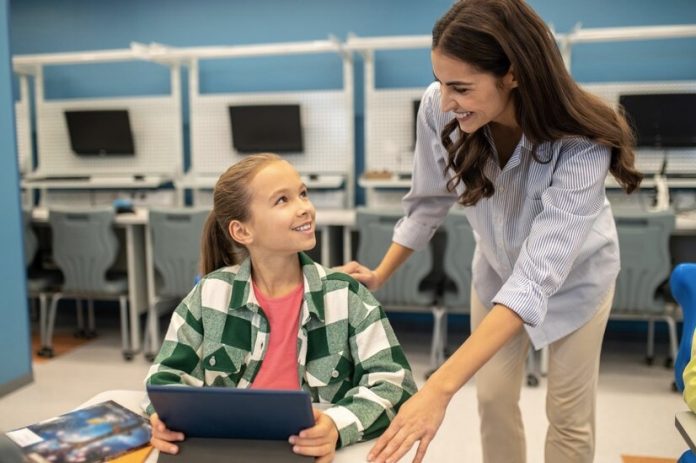Are classrooms genuinely inclusive and accessible for all students? This question deeply resonates as we contemplate the profound and transformative influence of assistive technology in the classroom. Approximately 1.3 billion individuals, constituting 16% of the global population, live with some form of disability, according to the World Health Organization. Now, take a moment to pause and envision the immense impact on their educational journey if they were to be deprived of the invaluable assistance provided by assistive technology.
SplashLearn: Most Comprehensive Learning Program for PreK-5

SplashLearn inspires lifelong curiosity with its game-based PreK-5 learning program loved by over 40 million children. With over 4,000 fun games and activities, it’s the perfect balance of learning and play for your little one.
Try for freeIn the rapidly evolving landscape of today’s world, where technology seamlessly integrates into our day-to-day lives, it becomes indispensable to explore the groundbreaking potential of assistive technology in revolutionizing the educational sphere, especially for students with diverse needs. By harnessing the limitless possibilities offered by technology, we can bridge the existing gaps, empower students, and cultivate genuinely inclusive learning environments.
“Education is the passport to the future, and assistive technology is the key that unlocks the door for every student.” – John Smith.
So, what exactly does assistive technology entail? What are the different types of assistive technology in classroom, and how do they operate? Now, let us plunge into an in-depth exploration of its definition, purpose, and remarkable ways through which it can provide support to students with diverse needs.
What Is Assistive Technology?
Assistive technology encompasses an array of tools, devices, software, and strategies meticulously designed to facilitate and bolster individuals with disabilities across various aspects of their lives, including education. Within the educational context, the purpose of assistive technology in education is to eliminate barriers and ensure equitable learning opportunities for students with diverse needs.
“Assistive technology is not about giving students an advantage; it’s about removing the barriers that hold them back.” – Sarah Johnson.
Assistive technology comprises an extensive range of solutions tailored to cater to specific requirements. It presents diverse possibilities and opportunities through different types of assistive technology for disabled students, thereby empowering students to actively participate in the process of learning, engage with educational resources, and proficiently demonstrate their knowledge and capabilities.
Now that we have explored the concept of assistive technology, let us delve into assistive technology in the classroom examples, highlighting how these tools empower students with disabilities.
Related Reading: Best Educational Websites for Kids that Spark Curiosity
5 Examples of Assistive Technology
Assistive technology encompasses a wide array of tools and devices that seamlessly support students with diverse needs within the classroom environment. Here, we present a selection of assistive technology examples.
1. Text-to-Speech Software

TTS software converts a written text into spoken words, assisting students with visual impairments or reading difficulties to access and comprehend textual information.
2. Speech Recognition Software

This technology allows students to dictate their thoughts or assignments, helping those with writing challenges or physical disabilities.
3. Graphic Organizers
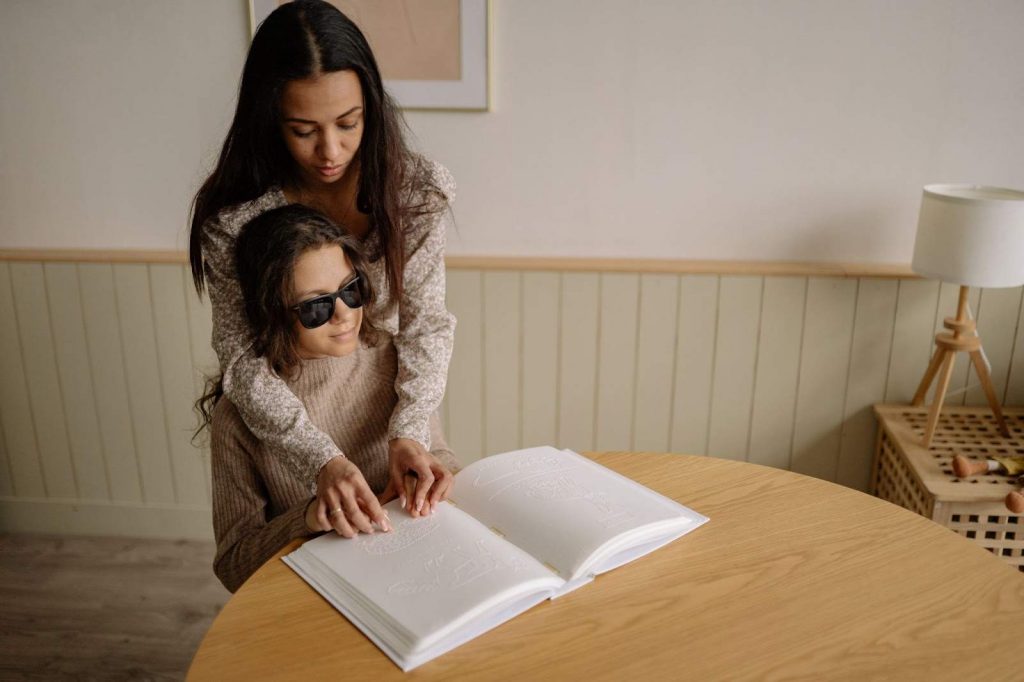
These visual tools assist students in organizing and structuring their ideas, supporting individuals with learning disabilities or difficulties in information processing.
4. Electronic Math Worksheets
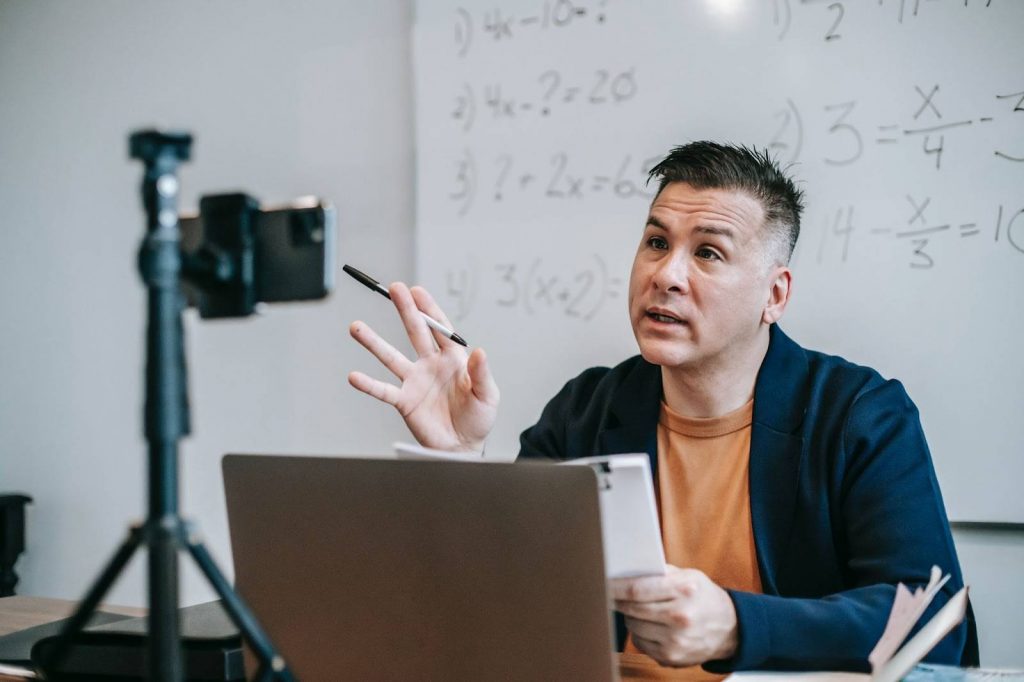
Designed for students with dyscalculia or other math-related challenges, these interactive worksheets provide visual representations and step-by-step guidance.
Related Reading: Best Math Teaching Apps for Teachers in 2023
5. Augmentative and Alternative Communication (AAC) Devices
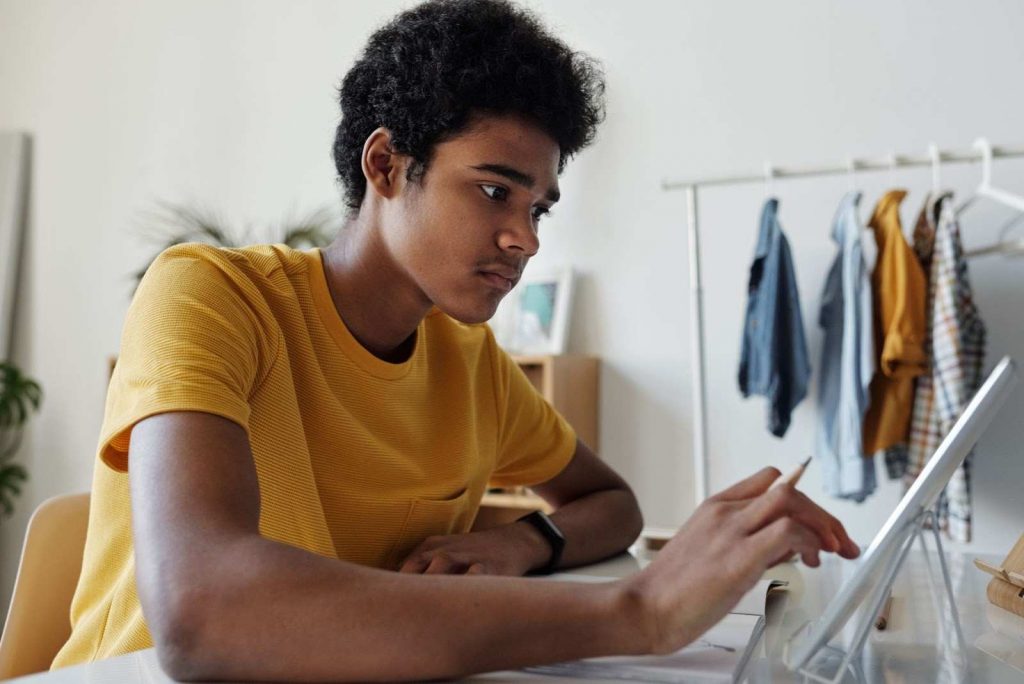
These devices facilitate communication for students with speech or language impairments, enabling them to express themselves effectively.
Let’s now explore the importance of assistive technology for students with disabilities in the classroom, taking into account that there is a wide range of available options..
3 Reasons Why Assistive Technology is Important
Using assistive technology, students with special needs can reach their full academic potential as this technology makes learning more engaging. Assistive technology plays a pivotal role in making education accessible and more inclusive. Individuals with special needs can overcome obstacles that they may face while learning without employing assistive technology. Before we dive further into who qualifies for assistive learning, let us see the benefits of assistive technology in the classroom.
“In the world of education, assistive technology is the bridge that connects students’ abilities to their aspirations.” – Robert Davis.
1. Enhancing Accessibility and Inclusivity in the Classroom
While disabilities may be complex, learning does not have to be. With assistive technology, students with disabilities can feel more inclusive and break the barriers by fully participating in the classroom. Assistive technology lets each student get personalized attention that is suitable to their learning ability. By adding assistive communication methods, various assistive devices, and adaptive tools in the classroom, students with special needs can enhance their learning potential.
2. Improving Academic Performance and Engagement
By addressing the challenges that students with special needs face, assistive technology has no doubt taken the educational landscape to a new level. Students can now sustain their knowledge and enhance their learning capabilities, along with seamlessly processing information and opening new horizons to learning. Assistive technology not only increases the academic potential of a student but it also boosts their levels of motivation and confidence.
3. Promoting Independence and Self-Confidence
Assistive technology in the classroom acts as a catalyst when it comes to independent learning and problem-solving capabilities. By providing additional assistance to students, using assistive technology, they can magnify their learning potential leading to better confidence and self-reliance abilities.
Understanding the significance of assistive technology leads us to explore the criteria and process for determining who qualifies for such support. Identifying students who can benefit from assistive technology involves a collaborative effort between parents, teachers, and specialists, ensuring that individual needs are met effectively.
Who Qualifies for Assistive Technology?

To be eligible for special assistance, students undergo evaluations conducted by a team of professionals who assess their disabilities. The evaluation process helps determine the student’s specific needs and paves the way for developing an individualized education program (IEP). An IEP outlines learning goals and the support required for the student’s educational journey. Schools must provide assistive technology if the IEP team determines its necessity.
However, not all students qualify for an IEP. Students who do not meet the criteria for an IEP can still be eligible for assistive technology through a 504 plan. Unlike an IEP, which focuses on addressing special education needs arising from specific disabilities, a 504 program provides services for students with any disability that hinders their ability to learn. These plans are permitted under Section 504 of the Rehabilitation Act.
While some disabilities and associated needs may be apparent, others require comprehensive testing. Learning disabilities or differences, for instance, may not be reflected in intelligence levels. The Learning Disabilities Association of America (LDA) explains that individuals with learning disabilities typically possess average or above-average intelligence but process information differently. These disabilities may manifest in specific areas, which LDA categorizes into five types:
- Dyscalculia: Impairs understanding and learning of numbers and math.
- Dysgraphia: Affects handwriting ability and fine motor skills.
- Dyslexia: Influences reading and language processing skills.
- Nonverbal Learning Disabilities: Challenges related to interpreting facial expressions or body language.
- Oral/Written Language Disorder and Specific Reading Comprehension Deficit: Impact reading comprehension or spoken language.
It is worth noting that related disorders such as ADHD, dyspraxia (affecting muscle control), and executive functioning disabilities (weakness in cognitive management systems) commonly coexist with learning disabilities, even though they may not fall under the definition of learning disabilities themselves, as outlined by LDA.
A survey conducted by the National Center for Education Statistics (NCES) found that in the academic year 2021–2022, the Individuals with Disabilities Education Act (IDEA) was used by about 7.3 million students, or 15% of all students enrolled in public schools. This highlights the prevalence and importance of providing appropriate support and technology to students with disabilities.
Now that we have explored who qualifies for assistive technology, let’s delve into the challenges educators and institutions may face when implementing these technologies in the classroom.
3 Assistive Technology Implementation Challenges
The successful integration of assistive technology in the classroom presents a unique set of obstacles that educators and schools must overcome. Although the benefits are substantial, addressing these challenges is essential to ensure a seamless and effective implementation. This article explores the common hurdles faced in implementing assistive technology and offers strategies to navigate them.
1. Financial Considerations and Resource Availability
Acquiring and maintaining assistive technology tools can prove to be a daunting financial task for schools and districts. It necessitates allocating adequate funding to procure appropriate assistive technology solutions. Furthermore, ensuring the widespread availability and accessibility of these tools for all students who require them is of paramount importance.
2. Training and Professional Development for Educators
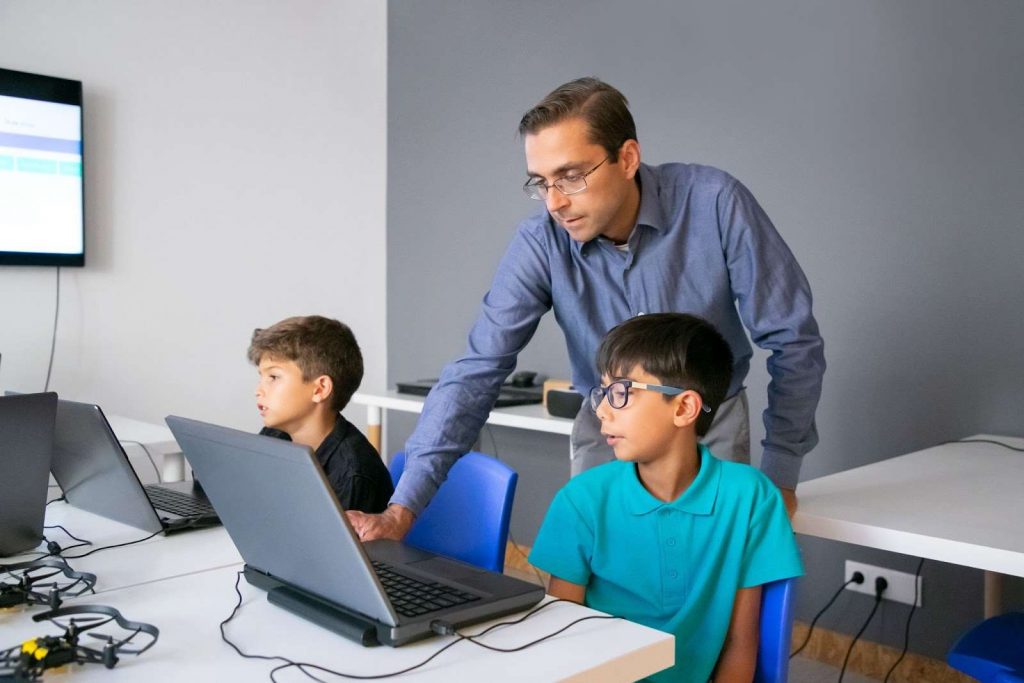
Educators often require comprehensive training and ongoing support to effectively utilize assistive technology tools in the classroom. Gaining familiarity with these tools, understanding their versatile applications, and learning how to customize them to cater to individual student needs are critical components of a successful implementation.
3. Addressing Potential Resistance or Stigma
Resistance from educators, parents, or even students themselves can pose considerable challenges when adopting assistive technology in the classroom. Misconceptions and fears regarding the potential stigmatization of students or the replacement of traditional teaching methods may hinder progress. Clear communication, awareness campaigns, and robust professional development initiatives can effectively address these concerns.
Amidst the various obstacles encountered, it is worth noting that the implementation of assistive technology has indeed expanded its reach to encompass virtual classrooms, thereby enabling students to persistently reap the benefits of its support and accessibility.
Related Reading: Best Teaching Strategies for 2023
Assistive Technology in Virtual Classrooms

As the educational landscape rapidly evolves, virtual classrooms have become an integral part of the learning experience. Many assistive technologies designed to support students with disabilities can be seamlessly adapted for online use. However, integrating assistive technology into virtual classrooms presents its own set of unique challenges.
One of the key challenges lies in ensuring that students who rely on assistive technologies receive adequate support for remote setup. Transitioning from a traditional class to a virtual one demands additional assistance to ensure students can effectively utilize their assistive devices and software. Moreover, the transportation of equipment between home and school imposes added responsibilities on students and their families.
Despite these challenges, educators have exhibited remarkable resilience in providing equal educational opportunities. They have successfully integrated assistive technology into both physical and virtual classroom settings. Although the COVID-19 pandemic has amplified the difficulties associated with remote learning, educators have demonstrated incredible adaptability and resourcefulness in finding innovative ways to facilitate learning for all students.
It is of utmost significance to provide comprehensive aid to educational institutions in their acquisition and effective utilization of technology, particularly tools tailored to assist students with diverse disabilities, as this has become an unparalleled necessity.
Through wholeheartedly embracing assistive technology within the realm of virtual classrooms, we have the potential to create learning environments that are characterized by equitable opportunities, thereby nurturing the triumph and well-being of every single student, irrespective of their individual abilities.
Related Reading: Effective Ways To Teach Visual Learners
Creating More Equitable Learning Environments
In the pursuit of delivering quality education to all students, the creation of equitable learning environments takes precedence. These environments ensure that every student, irrespective of their background or abilities, has an equal opportunity to thrive academically and personally. Equitable learning environments extend beyond mere access to education; they emphasize the provision of necessary support and resources to address individual needs, fostering inclusivity. Let us delve into some key aspects to consider when striving to create such environments.
Inclusive Policies and Practices

These days, educational institutions are actively creating a more inclusive environment for students to promote equality and diversity. Various policies are being structured to cover areas like admission, evaluation, curriculum development, and disciplinary procedures. These policies are designed keeping in mind the need to accommodate diverse learning styles that ensure each student has adequate knowledge.
Culturally Responsive Teaching
Culturally responsive teaching aims to create an environment showing respect to the diverse cultural backgrounds, experiences, and perspectives of students. Educational institutes are encouraged to inculcate culturally relevant content by discussing diverse perspectives and illustrating examples of how different each culture is. This will not only help students get a fresh perspective and respect individuals from different backgrounds but also make a more inclusive classroom. Culturally responsive teaching can bring about a positive environment in the classroom while offering equal learning opportunities to students.
Personalized Learning
Personalized learning opens doors to equitable education based on each student’s caliber. Each curriculum and assignment is designed based on the student’s learning capability. By employing technology, adaptive resource, and crucial data insights, each intended curriculum will foster students’ academic growth and progress.
Collaboration and Partnerships

Learning environments that are unbiased and fair-minded require a well-balanced collaboration among all stakeholders. Parents, teachers, school administrators, and community members are all equally responsible for it. To plant the seeds of success for the students, these individuals play an important role by encouraging them to engage in an open dialogue, seek feedback and take constructive criticism positively. Partnerships between community organizations, local businesses, and nonprofits also provide extra support to the students in their educational journeys.
Access to Assistive Technology
Assistive technology is a powerful tool that helps create inclusive learning environments for students. It’s a revolutionary force for students with disabilities or unique needs and grants every student the freedom to engage in the radiant tapestry of learning activities actively. Some of assistive technology examples include screen readers, speech-to-text software, and adaptive devices. These tools actively participate in learning activities and help turn obstacles into stepping stones, breaking down barriers and unleashing the student’s full potential. It’s like a symphony of harmony in education.
Conclusion
In the grand theater of inclusive education, where students with diverse needs occupy center stage, the resounding significance of assistive technology emerges as an irreplaceable masterpiece. Its symphony reverberates through the hearts of parents and teachers, casting a transformative spell upon the lives of their beloved children and students. The inclusion of assistive technology orchestrates an awe-inspiring ensemble of equity and inclusivity, as personalized support elegantly erases the vestiges of impediments to learning.
The profound impact of this symphony resonates in the form of enhanced accessibility, elevated academic performance, and the flourishing of independence and self-confidence within the hearts of the students. Nonetheless, this masterful composition encounters its share of challenges, from the intricate dance of financial considerations to the ever-present need for comprehensive training. Nevertheless, by embracing the harmonious integration of assistive technology in the classroom and nurturing a resplendent tapestry of collaborative endeavors, we embark upon a future where students effortlessly wield the tools and support indispensable for their academic triumph and holistic development.
Related Reading: What Are Teaching Aids? Types, Objectives & Examples
Frequently Asked Questions (FAQs)
How can assistive technology illuminate the path for students with diverse needs?
Assistive technology in the classroom empowers students by providing personalized support in the classroom, which helps students with special needs overcome challenges. Assistive technology offers various benefits, including accessibility, better engagement, and a boost in confidence.
Who can determine a student’s eligibility for assistive technology in the classroom?
Parents, teachers, specialists, and the Individualized Education Program (IEP) or 504 plan team work together to evaluate and help every student’s unique needs. They go through comprehensive assessments, evaluations, and recommendations to find out if the assistive technology is right or not.
What are the challenges that occur in the implementation of assistive technology?
Ensuring the provision of impeccable training and unwavering support for teachers emerges as a key implementation challenge.


